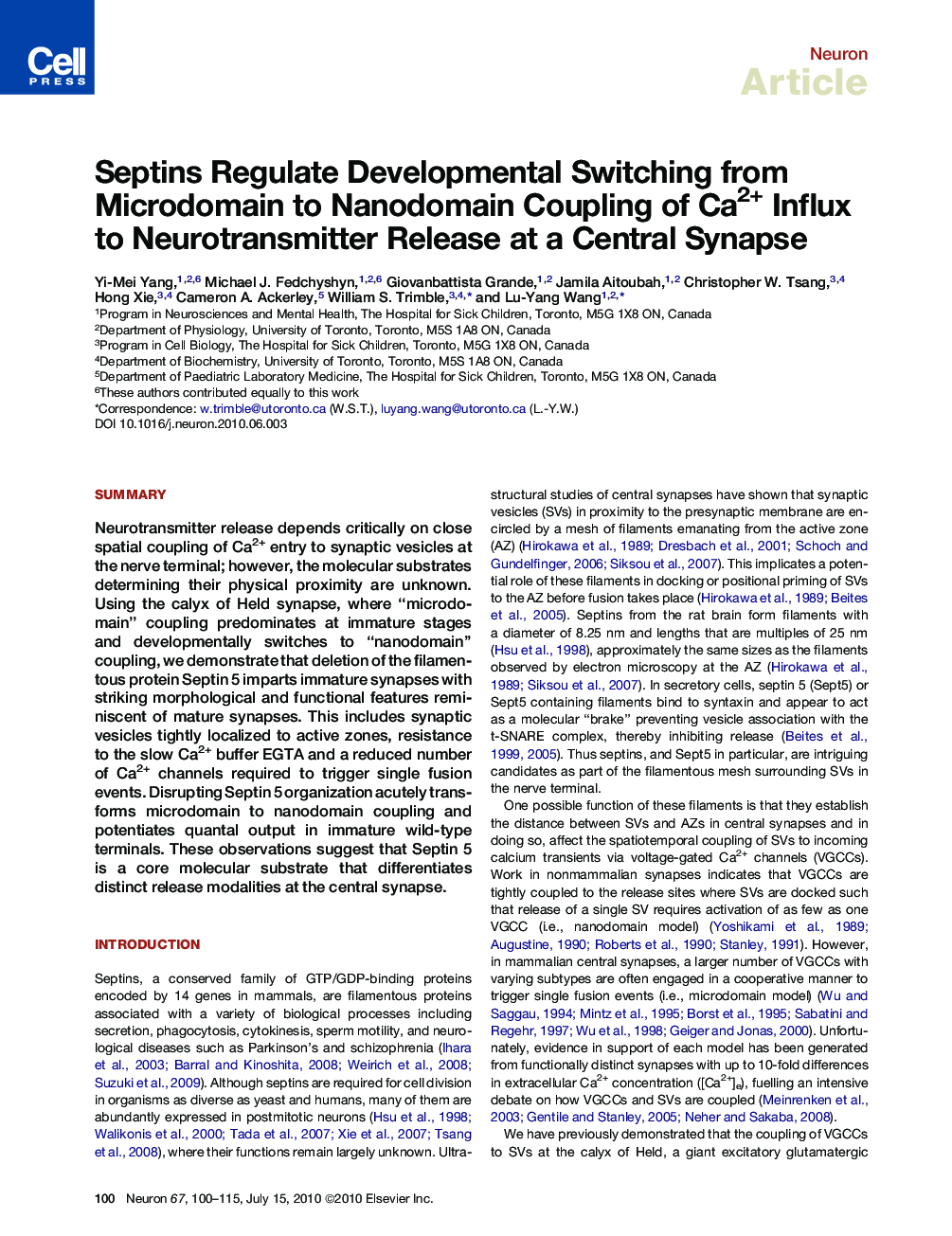| Article ID | Journal | Published Year | Pages | File Type |
|---|---|---|---|---|
| 4321879 | Neuron | 2010 | 16 Pages |
SummaryNeurotransmitter release depends critically on close spatial coupling of Ca2+ entry to synaptic vesicles at the nerve terminal; however, the molecular substrates determining their physical proximity are unknown. Using the calyx of Held synapse, where “microdomain” coupling predominates at immature stages and developmentally switches to “nanodomain” coupling, we demonstrate that deletion of the filamentous protein Septin 5 imparts immature synapses with striking morphological and functional features reminiscent of mature synapses. This includes synaptic vesicles tightly localized to active zones, resistance to the slow Ca2+ buffer EGTA and a reduced number of Ca2+ channels required to trigger single fusion events. Disrupting Septin 5 organization acutely transforms microdomain to nanodomain coupling and potentiates quantal output in immature wild-type terminals. These observations suggest that Septin 5 is a core molecular substrate that differentiates distinct release modalities at the central synapse.
► Septin 5 filaments form physical barriers for vesicle docking to active zones ► Knockout of Septin 5 increases the number of tightly docked vesicles and release ► Acute disruption of Septin 5 filaments tightens couplings of Ca2+ entry to fusion ► Septin 5 is a core substrate differentiating microdomain and nanodomain modalities;
